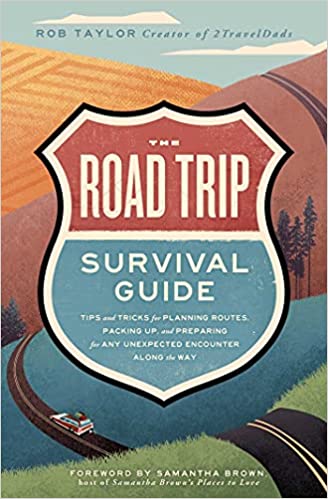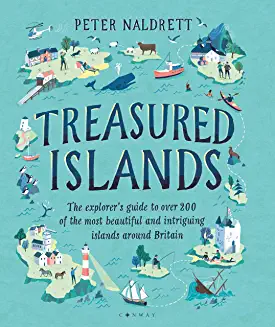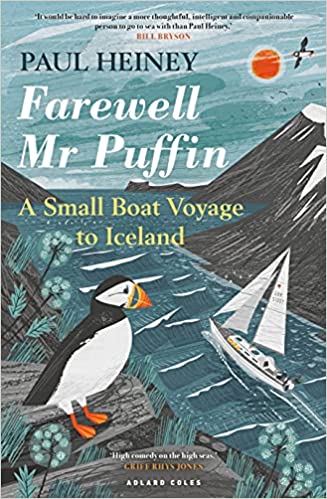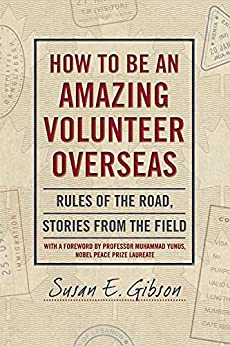Here are some of the travel books I’ve been reading the past few months, any of which would make a nice gift for the hodophile among your family, friends, colleagues — or for yourself, of course.
They’re selected to get those travel juices flowing again (if they aren’t already).

The Road Trip Survival Guide
By Rob Taylor (Tiller Press, 2021)
Even as the Covid epidemic was dealing severe blows to airline, cruise, and international travel, domestic road trips were zooming in popularity in 2020-21, making this practical yet enjoyably written guide a timely read.
Penned in a folksy style, Rob Taylor encourages readers to “explore at their own speed” and modify his suggestions as needed to fit their own circumstances.
That said, just about any road-tripper (novice or experienced) can find loads of tips within these pages. Divided into five sections — Planning, Packing, Road Trip Food, Safety, and Itineraries — Taylor helps pave the way for smooth travel both prior to and during your road trip.
Various sections are geared toward couples, families (don’t forget the grandkids!), and solo road-trippers. While Americans and Canadians are his primary target audience, many of the tips could prove useful for residents of other countries, especially those planning their own road trips in North America.
Sample excerpt: “Can we agree that everyone needs to bring a toothbrush? Yes. And shoes, too. Simple as those things may be, both are really easy to leave the house without.
“You know, you’re rushing and getting the car ready to go by a certain time, you’ve been wearing your slippers, you finish packing and you take off…You’re still wearing your slippers, not shoes and you were so busy you didn’t brush your teeth and your toothbrush is still sitting on the bathroom counter.”
While the above may be a bit facetious, Taylor’s advice to make multiple lists to check off before you leave is something I whole-heartedly endorse.
When I was a child, many a family road trip was interrupted when, an hour or so after we’d left, my father would ask my mother, “Did you remember to turn off the coffee pot?” She was never quite sure (though she always had), adding a dose of anxiety to what should have been a carefree start.
The Road Trip Survival Guide would have come in handy back then, as it does now.

Treasured Islands
By Peter Naldrett (Conway, 2021)
Any book about islands is one I’ll pick up, and one subtitled “The explorer’s guide to over 200 of the most beautiful and intriguing islands around Britain” only sweetens the pot.
Treasured Islands is divided into sections on Scotland, England, Wales, the Faroe Islands, Northern Ireland, Ireland, the Isle of Man, The Isles of Scilly, and the Channel Islands.
Of the 200 or so inhabited or frequently visited uninhabited islands in the region, Peter Naldrett managed to visit 150 of them for this book — a mighty task considering often adverse weather conditions, choppy seas (one ferry to the Scillys is charmingly nicknamed the “Vomit Comet”), and then the Covid shutdown.
The islands come with such intriguing names as Unst, Eel Pie Island, Yell, Holy Island, Hangman’s Island, Holm of Papay, Rat Island, and Middle Mouse.
I looked up a couple that I’d been to: Skellig Michael in Ireland (a UNESCO World Heritage Site now best known for its Star Wars settings) and Worm’s Head in South Wales, both among the most ruggedly beautiful spots on the planet.
Naldrett did them both descriptive justice, and added helpful information on getting there (timing is crucial due to tides and storms) and where to stay (in the case of these two uninhabited islands, where to stay nearby).
He also gives various top ten lists suggesting the best islands for foodies (oysters on the Isle of Skye), wildlife (the Faroe Islands), adrenaline junkies (coasteering in Guernsey), etc.
But mostly I was struck by how many of these islands I have yet to visit, including the Shetlands, the Faroes, the Orkneys, the Hebrides, and the Channel Islands.
Until then, I can thumb through Treasured Islands and dream of all these often windswept, remote isles and a fair share of sunny, beach-going destinations as well. This book is a treasure trove for any island lover.
Sample excerpt: “For Shetlanders, this island [named Mainland], the largest and most populous of the group, is the Mainland — not the larger island further south that contains Edinburgh. Calling this the ‘Mainland’ and referring to the outlying communities as the islands reveals a lot about what it means to be a Shetlander. They are proud people and many look at Scotland as a completely different nation.”

Farewell Mr Puffin
By Paul Heiney (Adlard Coles, 2021)
Subtitled “A Small Boat Voyage to Iceland,” Farewell Mr Puffin is an entertaining recounting of Englishman Paul Heiney’s adventurous, mostly solo sail from his home on the Yorkshire coast to Iceland, taking him from the North Sea to the icy waters of the Arctic.
While it’s a treacherous journey, Heiney makes it clear that he feels most at home at sea — and is perhaps happiest battling the harshest waters, just like his beloved puffins.
As he makes his way through the harbors of far-north island groups such as the Orkneys, Farnes, and Faroes en route to Iceland, the first half of Heiney’s account makes a for a fine companion book to Treasured Islands, adding plenty of additional flesh to the guidebook’s more fact-based approach. (Both books are from imprints of Bloomsbury Publishing.)
Along the route he provides a raft of wry observations and informative notes about boats, fishermen, cod wars, various island residents (not always favorable), Vikings, whales, weather conditions, mechanical issues, seasickness cures, high prices and hot pools in Iceland, and more.
But tying the narrative all together is his almost entirely fruitless search for sightings of the surprisingly elusive puffin, which he describes as the “joker of the seabird world.”
Alas, he concludes, the modern world may just not be conducive to survival of this lovable bird. Yet don’t assume all is doom and gloom. Maybe, he allows — keeping in mind that puffins are known for their remarkable resiliency — they were just concealing themselves, as is their preference.
Sample Excerpt: “{The puffin] takes few orders from anyone. He is a natural wanderer who will go where the fancy takes him, and that is always towards the sea. This is his real home. He loves cold and chilly waters and the nearer he can get to a snow-bound cliff side the better.
“Ask him what kind of place he prefers and he will use the word ‘harsh,’ which is why you will find him — if you’re lucky, for he is skilled in self-concealment — bobbing along on the curling crests of the waves as they travel across the bitter deeps of the North Atlantic.”

How to Be an Amazing Volunteer Overseas
By Susan E. Gibson (Barlow Books)
A Canadian with a banking background, Susan Gibson has spent much of the past 30 years volunteering and working with non-governmental organizations (NGOs) overseas.
Gibson writes that anyone who hopes to volunteer — or get a paid position with an NGO — needs first to learn before helping.
Her initial 90 days in Haiti (frustrating and mostly pointless) and her subsequent 90 days in Bangladesh (successful and useful) has informed her work and choices ever since. It was the difference between good intentions and good preparation.
If you’re interested in working as a volunteer overseas, Gibson first asks you to consider your motivation — are you passionate about what you’ll be doing? (Be honest about it.) Are you willing to educate yourself about the country where you’ll be living, and keep an open mind about traditions and conditions there?
If you think you’re ready for the challenge, Gibson then guides you through the world of NGOs, and which types are truly helpful to local populations and those that may not be. She offers plenty of practical advice and tips for planning your tip, packing, and adapting to a new environment — including food, drinks, and toileting.
She then proceeds to the realties of actually working abroad, including getting to know the local people and respecting their customs.
Finally, she tackles the issue of readjusting to life back home and applying what you’ve learned — preferably for the best. While encouraging, Gibson never sugarcoats anything. This book is an easy but thought-provoking read and essential for anyone who aspires to volunteer abroad.
Sample Excerpt: “There are many unethical people looking to take advantage of travelers wanting to do good. This is especially true if you are already on the road. You must do your due diligence by investigating any operator to ensure that its activities are legitimate and that they are actually helping the people they say they are.”
And to my American readers, Happy Thanksgiving!












Leave a Reply